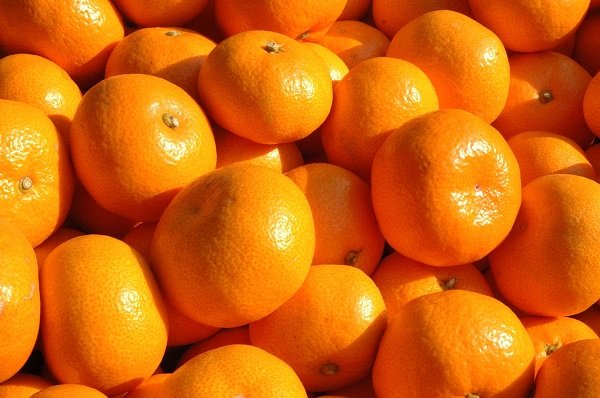Nishiura Mikan Jutaro
| Registration Number | 103 |
|---|---|
| Name of the GI | Nishiura Mikan Jutaro |
| Class | Fruit |
| Date of Protection | 2020/11/18 |
| Producing Area |
Shizuoka Prefecture
San-ura District (Shizu-ura, Uchi-ura, Nishi-ura), Numazu City |
| Applicant - Name and Address | Fuji-Izu Japan Agricultural Cooperatives 415-1 Aza Kamishoji, Shimokanuki, Numazu City, Shizuoka Prefecture |
Producing Area
Nishiura Mikan Jutaro is a tangerine with thinner fruit peel, less rind puffing and slightly smaller size than Aoshima Unshu (1). It also has a stronger flavor due to higher sugar content and acidity compared to Aoshima Unshu, and has good eating quality generated from the perfect balance between sugar content (sweetness) and citric acid (acidity), compared with general tangerines.
Nishiura Mikan Jutaro reaches the peak of shipment when tangerines from other areas are rarely shipped. This contributes for Nishiura Mikan Jutaro to be traded at a unit price that is about 40% higher than Aoshima Unshu, distributed nationwide in the same period.
For the production of Nishiura Mikan Jutaro, the variety Jutaro Unshu is used.
The variety is cultivated in the producing area, and harvested fruits are stored in a well-ventilated cool dark place, then those are shipped at least after seven days. However, those found to be overripe during the storage period can be provided to fruit processors even before the seven-day period elapses.
The producing area of Nishiura Mikan Jutaro is located on the Pacific side of Izu Peninsula and lies mainly on northern hillsides with a view of Mt. Fuji across Suruga Bay. It is blessed with fertile volcanic ash soil, which has excellent water and air permeability. Such conditions make the producing area suitable for the production of Jutaro Unshu, which has weak tree vitality.
Jutaro Unshu was discovered in Nishiura-kuzura, Numazu City in 1975 as a bud mutation of Aoshima Unshu, widely grown in Shizuoka Prefecture. In 1984, Jutaro Unshu was listed in the national registry of plant varieties (No. 642).
Since then, the locals have been working to form the producing area by distributing, to producers, seedlings propagated by grafting a scion from original Jutaro Unshu, as well as maintaining the cultivars by creating mother tree orchards to ensure future seedlings are secured ahead of aging of the original trees.
The producing area also has a storage technique that is based on the accumulated knowledge on cultivation of storage tangerines, rooted in the area.
As of 2018, the number of producers is 378, and the production volume is 2,356 tons.
- Aoshima Unshu: A tangerine discovered in Shizuoka City and most widely grown in Shizuoka prefecture. It features high sugar content and good eating quality, and is generally shipped during the period from December to March of the following year.


